
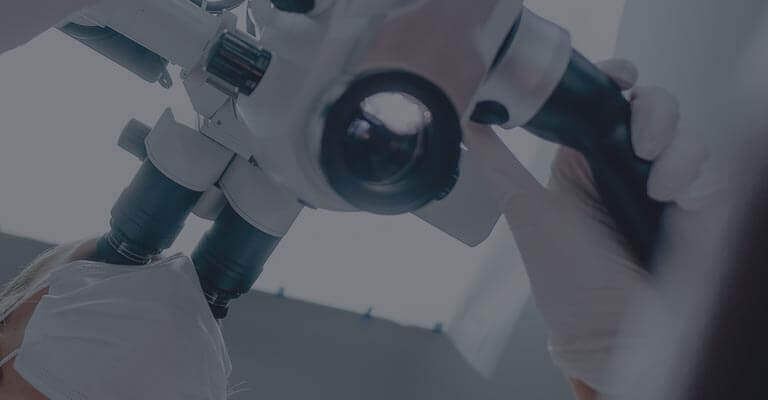
Jaw Bone Reconstruction at BERLIN-KLINIK in Germany
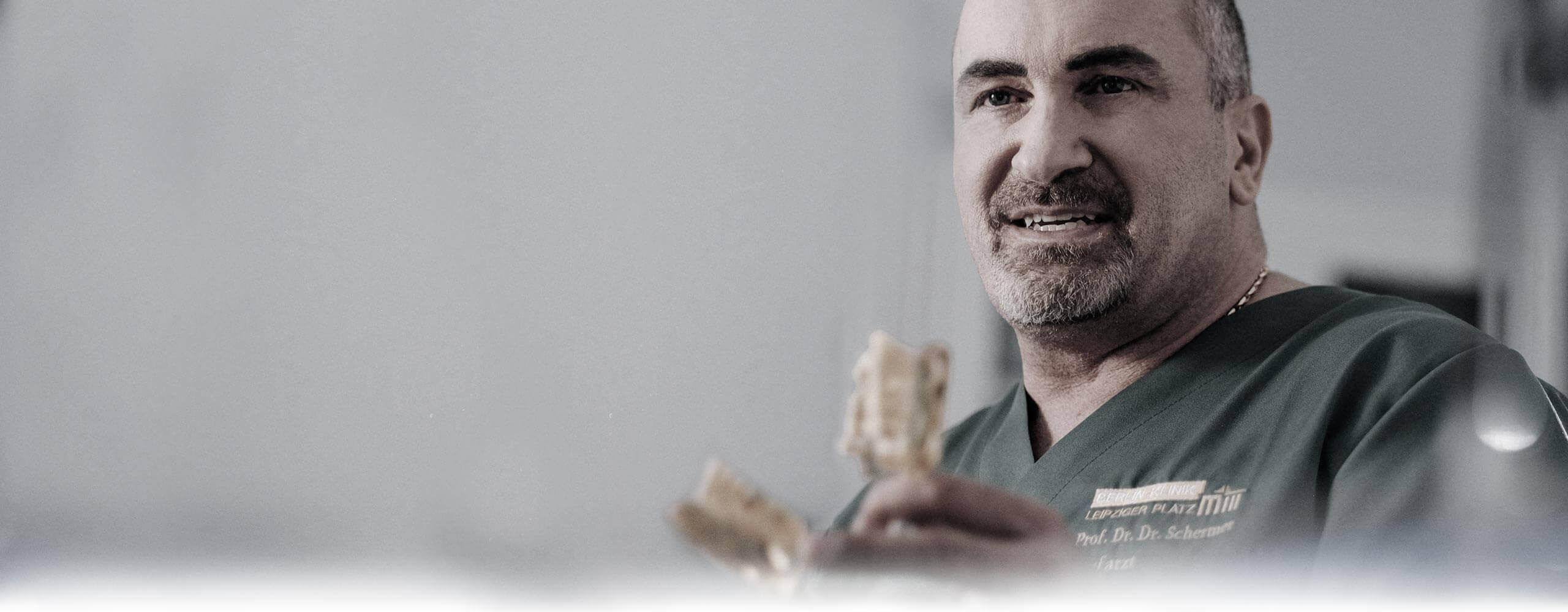
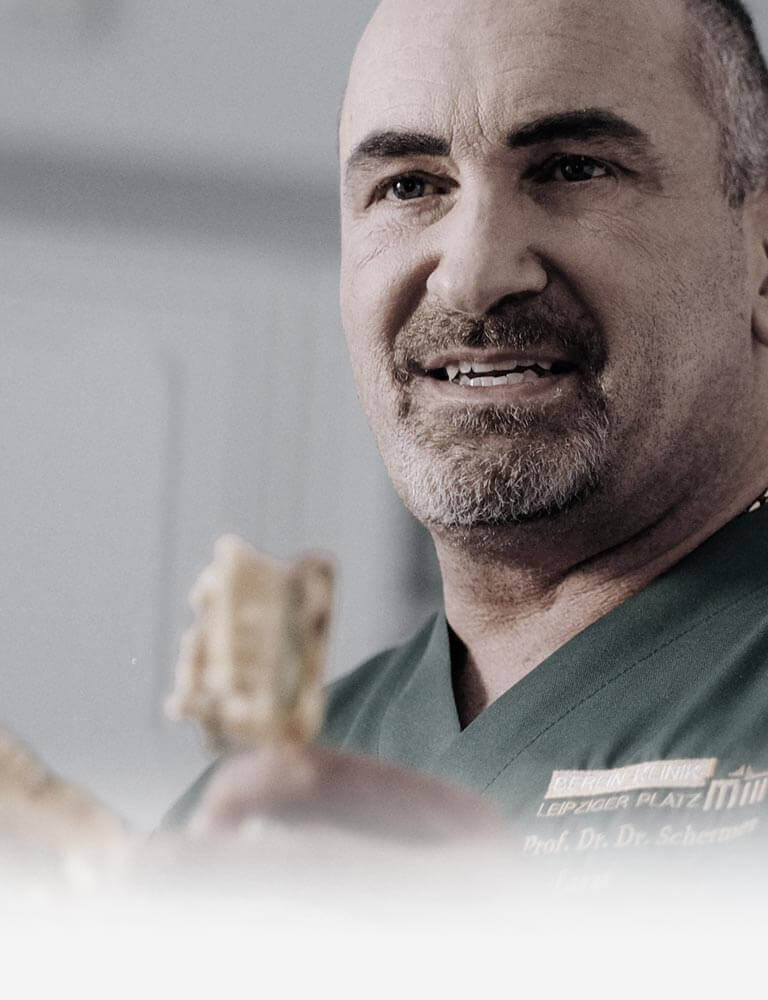
Why Jaw Bone Reconstruction in Germany at the BERLIN-KLINIK?
Because BERLIN-KLINIK International Dental Clinic Head surgeon Prof. Dr. Dr. Stefan Schermer belongs to the pioneers of gentle and effective alloplastic, synthetic bone reconstruction. By bone reconstruction measurements with sterile, artificial bone replacement, Prof. Schermer prevented hundreds if not thousands patient from unpleasant withdrawal operations of own bones. He has published hundreds of patient cases scientifically. Among other things he has documented scientifically, that -secure and stable- have been implanted titanium dental implants in a totally vertical and horizontal atrophic upper jaw – in which was only 1 mm (!) of bone left – after alloplastic bone reconstruction. For you, this means to benefit from surgical experience of many many cases and of international recognised medical excellence. The Scientific Publication is printed in a english full text version at the end of this chapter.
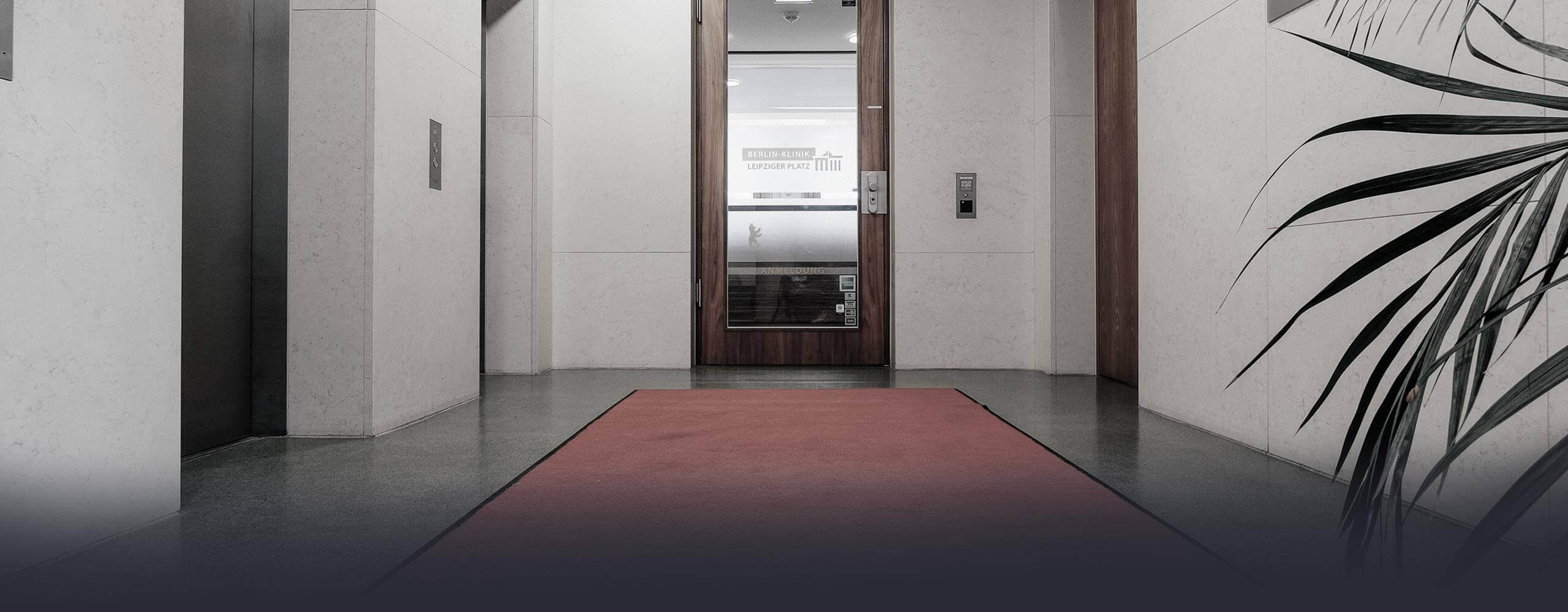
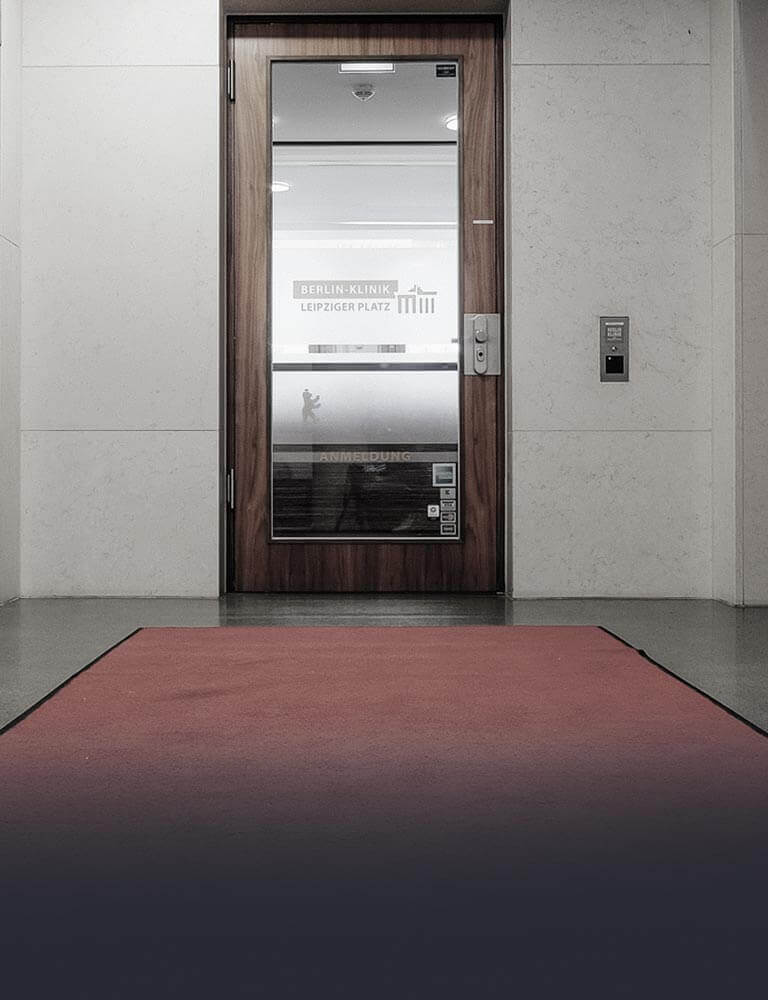
Reasons for Jaw Bone Loss
There are many different reasons for jaw bone loss. The most common being tooth loss. When a tooth is extracted without filling the extraction wound with bone or alloplastic synthetic bone replacement material, the jaw bone surrounding it will recede very rapidly. Severely affected patients may have only a few millimetres of bone left, sometimes less than 10 percent of their original jaw bone. The second most is periodontal disease, periodontitis in all its different expressions. Strong jaw bones are the foundation for healthy teeth and high-quality dental prostheses. Hence, they are also significant for all related factors such as the longevity of teeth or implants, safety, and aesthetic aspects. Frequently it is the state of the jaw bones that determines the type of treatment a patient can receive. This is why in the past many patients received removable prostheses as a last resort. BERLIN-KLINIK International Hospital and Dental Clinic provides bone reconstruction therapies for you to keep your own tooth stable or to become reconstructed your jawbone for setting dental Implants.
Periodontal Department
BERLIN-KLINIK Periodontal Department treatments and constant dental Hygiene and Prophylaxis offer the only secure way to stop periodontal diseases, periodontitis, periimplantitis and bone loss. Basis is a serious and defined analysis and diagnostic of the reason and expression of each type of periodontitis and the commitment to consequent individual dental hygiene and prophylaxis recall.
You Can Find Jaw Bone Topics Under:
Unhealty gum definitely causes bone loss! Periodontitis or periodontal desease is sometimes mistaken as gum disease which is only the start of the disease. If untreatened periodontitis will definitely and end up in prosthetics or dentures. Dental bone loss by periodontitis is a very serious disease. Effects can very seriously harm other parts of the body! Many people think about dentistry that if it does not hurt they have no need to visit a dentist. Sometimes yes, but not in case of a periodontitis! Consequences of an unthreatened periodontitis may be severe. Not only you will loose teeth but it can also cause bad breath, halitosis up to breast implant inflammations and very serious heart and brain diseases. The different bacteria in dental plaque and calculus, tartar are hanging around your teeth the whole day. They eat and destroy the bone and the periodont which fixes the teeth and also dental implants. The crap of the bacterias causes inflammation which again provides further bone loss. And it is not reversible! But a serious and consequent treatment at BERLIN-KLINIK Periodontological Department and BERLIN-KLINIK Prophylaxis can stop the progress.The treatment starts with a intensive individual prophylaxis and goes on with deep cleanings or root planning at individual recall intervals. Maybe without the need of periodontal surgery. The interval varies on a case by case basis, but is usually every 3-6 months.
The basis of every treatment is the right diagnostics and analysis of the problem. BERLIN-KLINIK Periodontological Department is specialized in periodontal diagnostics and treatment. First the depth of gum pockets were checked. 4mm depth is at risk and more than 7mm is a high risk depth! A gum pocket then also means a bone pocket. Which is definitely a serious problem for the treatment. With individually specialized periodontal probes which may be a PCR test in the meaning of polymerase-chain-reaction or a active matrix-metallproteinase test (aMMP-8) the basic diagnostics for the following treatment steps were done. The results of the periodontal tests guide the way to further measurements.
When a tooth lost a certain amount of bone it is deemed periodontal hopeless. Hopeless teeth need to be extracted. Patients often think that because the tooth does not hurt, they do not understand why it needs to be extracted. The reason is that because the tooth is then impossible to clean. And with the extensive bone loss in one region which is no more possible to clean, the bone loss may continue to other regions if not effectively treated. The problem with continuing and ongoing bone loss is that it makes a successful treatment very difficult and sometimes impossible. In some states of periodontitis and bone loss it is better to controlled pull the tooth out and find enough bone left to place an implant. Waiting for more years can cause so much bone loss that there will not be enough bone to set an immediate Implant or implant without bone reconstruction. Even an old fashioned denture placed right time may fit very well versus one placed in years after losing more bone may move around and is not to become stable anyhow. And by moving around it destroys even more bone with its movements.
Without good and effective oral hygiene the bone loss wil not be to control. Additional negative progress comes from further factors and lifestyles. Smoking and tobacco definitely will make periodontal disease progress faster. Along with all the other problems it causes, we are talking about twice to six times negative progress by smokers! Not to talk about the increasing risk of oral cancer. Diabetes and periodontal disease have been linked, and if one is uncontrolled it can affect the other. Uncontrolled dental bone loss will make diabetes more difficult to control and vice versa. Like diabetes above, periodontal disease has been linked to cardiovascular disease and as above, getting dental bone loss under control can help your cardiovascular health as well. Ostheoporosis and several medications have also to be considered in diagnostics and treatment.
Periodontal surgery can be very beneficial, but unfortunately tends to be fairly painful post operatively. And it may also cause seemingly longer teeth. In general, it is not the first course of treatment of dental bone loss, but may be needed if other treatments do not satisfy with results. Osseous surgery must be done when patients have severe dental bone loss, and is done to decrease the bone pockets around the teeth. This allows patients to clean more effectively around the gums. When there are massive gum recessions or thin tissue sometimes it is necessary to graft tissue over the particular area. Often the tissue is taken from the roof of the mouth and grafted to the particular area it is needed. Gingivectomie operation may be necessary as part of periodontal surgery and treatment which includes the removal or recontouring of bone. Gingivectomy is when only the gum tissue is removed or recontoured. This can be done with a conventional blade or using specialized therapy laser or modern high frequency electrosurgery which we prefer in BERLIN-KLINIK Periodontologic Department. The lingual frenum is a part of tissue that attaches underneath tongue to the floor of the mouth. Sometimes it is attached closer to the tip of the tongue or too close behind the lower front teeth. Depending on its anatomy it can severely limit the action of the tongue and may need to be cut surgically. This is called a lingual frenectomy. Sometimes a frenectomy is needed at the midline of the upper or lower lips as well. On the upper lip sometimes it cause a gap called diastema between the two front teeth which is not by definition a functional problem but maybe negative for the sound of speech. And it makes one look kind of dumb.
Having done more than some thousands of operations of this kind the Head Surgeon of International Hospital BERLIN-KLINIK Dr. Dr. Schermer, as one of international leading experts in alloplastic surgery, bone reconstruction and implantology has a lot of experience with approved methods. If you would like to find out more about this topic there are various publications you can refer to. Dental defects that are not too serious can be treated in a minimally invasive and safe way, using bone replacement material. Surgery involving synthetic bone is called alloplastic surgery and is a specialised discipline of transplant surgery. BERLIN-KLINIK international hospital is very committed to this topic and gives regular scientific reports and presentations at national and international conventions and expert meetings. BERLIN-KLINIK International Hospital also tries to make it available to all interested audiences through publication. The senior lecturer for bone reconstruction Dr. Dr. Schermer is also recognised by state authority for the further training of dentists and surgeons in the field of bone reconstruction in Germany and international.Today, even with severely reduced jaw bone, lost teeth can be replaced with dental implants inserted into the patient’s jaw bone. We are specialised in restoring damaged jaw bone using either patients’ own bone material or, alternatively, synthetic and sterile bone replacement material. All operations inpatient or outpatient treatments can done with full anaesthesia to provide maximum comfort to you.
Here you can read the scientific report of a alloplastic reconstruction of a former totally destroyed/atrophic destroyed jawbone. The patient was rejected by two well known Surgeons in Berlin when she asked Dr. Dr. Schermer for help. He told her that it is possible to reconstruct her jawbone and to set dental implants. As one oft the pioneers of synthetic bone reconstruction Dr. Dr. Schermer, head surgeon of BERLIN-KLINIK International Hospital and International Dental Clinic is able to offer you a pain-free, clean and safe way to reconstruct your jaw bone for implants. He was even able to give back this woman her jaw bone. In a case where her jaw bone was nearly totally destroyed and only 1mm bone was left. He was even able to later insert dental implants in the reconstructed jawbone. Today she has again all fixed and secure teeth, but some are on dental implants. The scientific report about this reconstruction was printed 2011 from the well known medical Publisher SPITTA Verlag Balingen / Germany:
SPITTA Verlag / Balingen: E – Scientific Publication – english full text version.
Author: Medical Director and Head Surgeon Dr. Dr. Stefan Schermer: Title: Alloplastic sinus floor elevation with complete atrophy of the edentulous alveolar process by means of pure phase synthetic hydroxyapatite bone reconstruction material. Keywords: Boneloss, bone augmentation, dentistry, prosthetics, jawbone loss, bone reconstruction material, periodontitis, periodontics, periodontal diseases, dental implants, late implants, immediate implants, immediate loading.
This clinical case report shows that use of a nanocrystalline, hydroxyapatite-based bone substitute can be beneficial in jaw augmentation and defect reconstruction. The author describes the case of a patient with a difficult initial situation after cystectomies in the upper and lower jaw, loss of the schneiderian membrane and loss of teeth in two quadrants, followed by complete atrophy of the alveolar process. The stable volume and paste-like consistency of the bone substitute used in this case proved to be decisive advantages for external sinus floor elevation in the absence of the schneiderian membrane. The author comes to the conclusion that the material used in this case is a valuable alternative to autologous bone grafting in preprosthetic surgery. Information from the manufacturer is included below.
Introduction
The number of bone substitutes available on the dental market has increased greatly in recent years. The materials are classified according to their origin into autogenous, allogeneic, xenogeneic and alloplastic bone grafts or implants11. The bone substitutes can also be divided into organic and inorganic substances, by analogy with the structure of the extracellular matrix of bone, which consists mainly of inorganic hydroxyapatite and type I collagen. With natural organic materials there is a danger in principle of disease transmission and antigenicity, which can be expressed by rejection or allergy. The advantages are biocompatibility, good osteoconductive properties and relatively long useful life in the tissue. Available products employ allogeneic bone graft from deceased or living donors (AAA bone = antigen-extracted autolysed allogenic bone; DFDBA = defatted demineralized bone allograft1,7). Artificial organic bone substitutes come in absorbable and nonabsorbable form. Polymethylmethacrylate granules can be incorporated in bone without causing irritation but remain there lifelong as a foreign body, because the body has neither a cellular nor a humoral mechanism to break down this material. Absorbable polymers decay into organic acids by spontaneous hydrolysis. Osteoblasts dedifferentiate in an acid milieu so that too large an amount of these polymers might have a negative influence on new bone formation. Hydroxyapatites of natural origin are obtained from algae, corals and animal bone for use in bone substitutes3. The high macroporosity and long-term stability of these substances are characteristic. The group of alloplastic synthetic inorganic substances, e.g., a- and b-tricalciumphosphates and hydroxyapatites provide further adequate bone substitutes. Currently, b-tricalcium phosphates (granules) and hydroxyapatite (granules or pastes) are mainly employed as bone substitutes. The mechanisms of breakdown and remodeling in hard tissue largely correspond but are not identical. Radiographically, the two groups differ postoperatively especially in that the hydroxyapatites appear less radiopaque so that postoperative radiological analysis of the two groups must differ.
Bone substitution made of hydroxyapatite
In this study, an inorganic bone substitute made of pure-phase and unsintered hydroxyapatite (HAP) in paste form was used11. It consists of 65% water and 35% nanocrystalline, pure-phase hydroxyapatite (Heraeus Kulzer, Hanau). The high water content gives the material a plastic consistency, so that it is easy to work and is penetrated very quickly and effectively by blood from the defect. This enables it to become vascularized rapidly. A further property is that the bone substitute is radiopaque, which facilitates radiographic follow-up of the newly formed bone. Its chemical composition corresponds to the calcium phosphate component of natural bone. The smallest crystals dissolved in water have an average crystallite size of only 100 nanometers, allowing an increase in the active surface to roughly 106 square meters per gram (Fig. 1). In the course of the healing process, bone grows through Ostim®, which is absorbed by osteoclasts like a matrix and replaced by osteoblastic autogenous bone2,4,9,18. After six months, newly formed bone can no longer be distinguished from the original. A study by KILIAN et al.6 showed that the nanocrystalline structure enables osteoclastic breakdown but ensures that the material remains in situ. Dental and surgical applications of HAP-based bone substitutes include, for example, augmentations and defect reconstructions in the alveolar processes and sinuses, as well as in reconstructive periodontology.
Clinical case history
A 47-year old patient presented in 2006 wishing for an implant-borne dental prosthesis. An external open sinus lift was performed in the second quadrant with the HAP bone substitute Ostim®. This measure was necessary because a cystectomy in the left maxillary sinus performed elsewhere long in the past had led to massive bone atrophy in the left maxilla and because the patient was desirous of an implant-based restoration there despite the progressive bone loss (Fig. 2). Her general medical history was unremarkable. She was a nonsmoker and not on regular medication. The patient wanted to have implants inserted subsequently in the maxilla and mandible. The planned implantations in the left maxilla and right mandible could not be performed in a single stage as there was an extensive defect in the right mandible as a result of a radicular cyst with contact to the alveolar nerve canal, while teeth 22 and 23 in the maxilla were not worth preserving, and there was a loosened implant in region 24 and a residual cyst in the antrum (Fig. 3). After preparation, the bone substance still present clinically appeared thin and brittle. Defect reconstruction following cystectomy was first performed in the mandible, sparing the inferior alveolar nerve. A paste-like bone substitute was the only substance that could be applied without risk so as not to compress the partially exposed inferior alveolar nerve. In the left maxilla, the destroyed teeth 22 and 23 and the loosened implant 24 were removed. At operation, the thickness of the maxillary alveolar ridge distal to 24 was reduced to less than one millimeter to 1.5 millimeter, indicating massive vertical and horizontal atrophy of the alveolar process. After elevating the vestibular and palatal mucoperiosteum to distal to the tuber, an opening the size of a cherry stone in the vestibular hard tissue of region 26/27 was apparent following the cystectomy elsewhere (Fig. 4). This was covered only with a thin layer of soft tissue. Since there was no longer a schneiderian membrane on the floor of the sinus (Fig. 5), an absorbable EpiguideÃ’ membrane was inserted using a bilayer technique to act as the cranial boundary of the sinus (Fig. 6). The resulting cavity was filled with about 3.0 ccm of the adhesive paste-like bone substitute Ostim® applied in layers (Fig. 7 and 8). The properties required of the augmentation material include good membrane adhesion, stability and remaining in situ. It should also be possible to apply it closely to local structures. As described above, the HAP bone substitute employed consists of 65% water and 35% nanocrystalline pure-phase hydroxyapatite, so that it meets these requirements due to its high water content and the associated plastic consistency. The bone substitute was then condensed gradually towards the sinus. The vestibular bone defects were also covered with the absorbable membrane, and the soft tissue was then closed with Terylene and Sulene 4/0 and 3/0 (Serag-Wiessner, Naila). The patient was given intravenous dexamethasone, metamizole and clindamycin intraoperatively. Oral clindamycin and ibuprofen and nasal oxymetazoline hydrochloride were prescribed postoperatively. After 7 and 10 days, the wound appeared healthy and the sutures were removed successively. The first radiographic follow-up took place after 3 months. Clinically, the soft tissue appeared completely restored and the underlying hard tissue was normal on palpation, resistant to pressure and nontender. Because of the markedly increased opacity of the augmentation material visible on the radiograph, the expected augmentation volume was assessed as very good. Adequately augmented bone was demonstrated as far as region 26 in the area of the previously described hard tissue defect (Fig. 9). 6 months postoperatively, the radiopaque structures in the augmented area of the left sinus floor and fourth quadrant were clinically and radiographically homogeneous, indicating a good bone site (Fig. 10). The bone structure in the upper alveolar ridge half of region 22 to 27 was similar to the neighboring structures. The sinus half had a denser structure without clear trabecular marking. No signs of an inflammatory component were found. In the second procedure after 8 months, the bone appeared good clinically as far as region 25/26. In region 26 and distally in the area of the open defect, reconstruction was not yet adequate so that further augmentation with repeat reconstruction was performed in region 26 and distal to this (Fig. 11). Implantation was performed successfully at the same time in the second quadrant. The following implants were inserted: NT 15mm in region 22, NT 15mm in region 23, and NT 15mm in region 25 (3i Implant Innov., Florida, USA) (Fig. 12). Some of the sutures were removed after 7 days, and the remainder after 10 days, with clinical and radiographic follow-up after 3 and 6 months. After 12 months in total, another implant was inserted in region 26 in a third procedure (Ixx2 5, 12 mm type, m&k dental, Jena). The implants in positions 22 to 25 were exposed and provided with gingiva formers (Fig. 13). The implants have appeared normal clinically and radiographically until now; they have been restored prosthetically (Fig. 14). Five years postoperatively, the patient attends regularly for check-ups and preventive management. (Notice:These types of implants employed are no longer the first choice in present-day surgical practice and would not be used today for this indication.)
Results
All of the sutures were removed 10 days after operation, when the clinical appearance was satisfactory. Radiographic and clinical follow-up after 3 months showed that the soft tissue appeared completely restored clinically and the underlying hard tissue was normal on palpation, resistant to pressure and nontender. Increased opacity of the augmentation material was found on the radiograph, so that very good augmentation volume was anticipated. After 6 months, clinically and radiographically homogeneous radiopaque structures were apparent in the area of the left sinus floor and fourth quadrant, indicating a good bone site (Fig. 10). The bone structure in the upper alveolar ridge half of region 22 to 27 was similar to the neighboring structures. The sinus half had a denser structure without clear trabecular marking. No signs of an inflammatory component were found. Similar findings were confirmed after the second and third operations. Intraoral follow-up and review of dental function in July 2011, that is, in the fifth postoperative year, were normal anatomically and radiographically with good function.
Discussion
The most serious complication of a sinus lift procedure is perforation of the schneiderian membrane, which can lead to chronic sinusitis due to migration of the bone substitute into the sinus cavity8,10,13,15,16. The rate of failure of sinus lift and subsequent implantation correlates with the size of the perforation5. In this case report, successful implantation was performed in the maxilla in the complete absence of the Schneiderian membrane. The bone substitute Ostim® was inserted covered with an absorbable membrane, and the implants were placed after a complication-free period. This success cannot be generalized, as this is only a case report, but it indicates the advantages of Ostim® compared with other bone substitutes. Compared with autologous bone and rapidly absorbable bone substitutes, no significant reduction in volume is found with this type of alloplastic bone reconstruction material due to its volume stability and slow absorption. There is therefore adequate time for osteoconductive new bone formation. In a study by Schwarz et al.14, which evaluated that in peri-implant infections with bony defects, the authors make the point that alloplastic bone reconstruction appears to have a negative influence on the initial adhesion of mucoperiosteal flaps when a membrane is not used. In this study, bone regeneration at peri-implant bony defects was compared between Ostim® alone and Bio-Oss® with use of a collagen membrane. This was not observed in the present case. On the contrary, it was found that there was no particle leakage through the soft tissue, which occasionally occurs with granules. Compared with incorporation of autologous bone chips and blocks, it appeared helpful and beneficial that the material could be applied to fit closely with existing or previously incorporated structures.
Conclusion
In summary, it was shown by CA Dr. Dr. S. Schermer / BERLIN-KLINIK International Hospital and International Dental Clinic that the nanocrystalline, hydroxyapatite-based bone substitute can be beneficial for use in jaw augmentations and defect reconstructions. In this case, the stable volume and paste-like consistency proved to be advantages when it was used for external sinus lift in the absence of the schneiderian membrane. Alloplastic bone reconstruction can therefore be used as a valuable alternative to autologous bone grafting in preprosthetic surgery. The alloplastic procedure is much less costly logistically and economically compared with autologous bone harvesting and grafting, and involves less risk. Adverse postoperative effects on the patient are unlikely and hospitalization is not essential.
The references can be found at www.zmk-aktuell.de/literaturlisten
Authors correspondence address:
CA Prof. Dr. Dr. Stefan Schermer
BERLIN-KLINIK
Klinik für MKG-Chirurgie / Plastische Operationen
International Hospital – International Dental Clinic
Leipziger Platz 3
10117 Berlin
http://www.berlin-klinik.de
http://www.berlin-klinik.com
Figures
Fig. 1: Nanocrystals of the pure-phase, all-synthetic hydroxyapatite bone substitute Ostim® (transmission electron microscopy [TEM]).
Fig. 2: The preoperative orthopantomograph shows residual upper teeth with prosthetic restoration and a unilateral free end situation on the left from region 24. Teeth 22 and 23 were not worth preserving, implant in situ in position 24 with peri-implant translucency, cystic bone change in region 24 to 28, free end situation distal to 45 with persistent bone defect following extraction of tooth 46, normal ventilation of the sinuses and progressive bone atrophy in the mandible.
Fig. 3: Resected specimen of the residual cyst in the left maxilla, approx. 2.6×1.5 cm, removed teeth 22 with cast post core structure, 23 with customized root pin splinting, all metal ceramic crowns and implant in region 24 with symmetrical rotation.
Fig. 4: Opening the size of a cherry stone in the hard tissue in region 26/27 following cystectomy and total revision of the left sinus elsewhere.
Fig. 5: Cleaned hard tissue. Absence of schneiderian membrane
Sinus floor about 1mm thick and of nonhomogeneous structure. Total atrophy of the alveolar process of the second quadrant.
Fig. 6: Absorbable Epiguideâ membrane inserted over the sinus floor as the cranial boundary of the region to be augmented
Fig. 7: Ostim applied for sinus floor elevation. Accumulation of blood from the defect in the operation area
Fig. 8: Condition after insertion of a membrane and partial filling of the defect with Ostim. The augmentation material is completely penetrated by blood from the defect
Fig. 9: Preoperative situation before the second procedure.
Reconstruction of the second quadrant showing the defect area in region 26 and distal to this
Fig. 10: Orthopantomograph (OPT) 6 months postoperatively prior to planned implant insertion shows homogeneous radiopaque structures in the augmented regions of the left sinus floor and 4th quadrant
Fig. 11: Implants in situ in regions 21-24. Defect in region 26 for repeat reconstruction
Fig. 12: Postoperative orthopantomograph after second reconstruction of region 26 and distal to it and implant insertion in regions 22, 23 and 25
Fig. 13: Postoperative orthopantomograph following third operation after implant insertion in regions 26, 46 and 47 and provision of implants 22, 23 and 25 with gingiva formers
Fig. 14: Final situation after prosthetic restoration.
